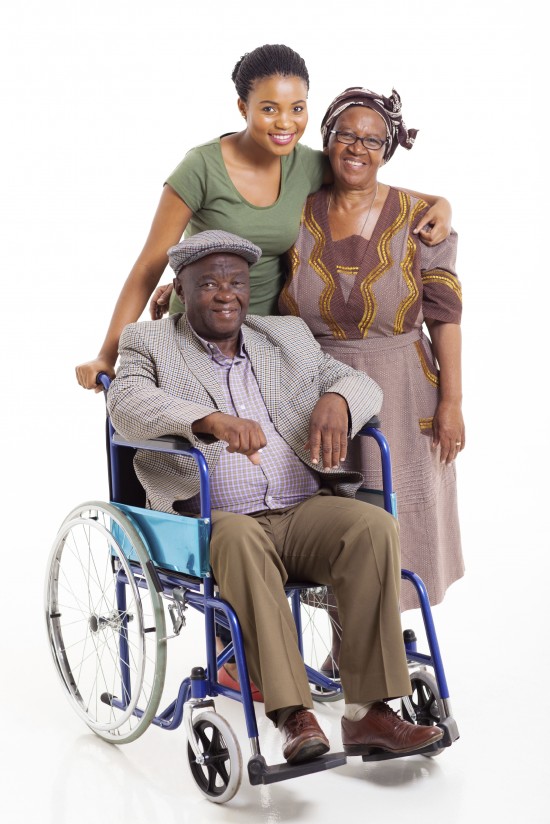Category: Transitions in care
Posted by Dr. El - May 25, 2019 - McKnight's Long-Term Care News, Transitions in care

Here’s my latest article on McKnight’s Long-Term Care News:

In McKnight’s Long-Term Care News this month, there was a report on a study examining factors that contribute to transfers of frail residents from skilled nursing facilities to emergency departments.
Using focus groups of residents and family caregivers, researchers found four main contributors to the transfers: “(1) doubts about the quality of skilled care facility nurses’ assessments; (2) perceptions that physicians were absent from the nursing home; (3) misunderstanding the relative capabilities of skilled care settings and emergency departments; and (4) beliefs that responses to medical needs were inadequate.” In addition, the lead author found that some of the transfers were due to a lack of acceptance on the part of family members that their relative was near the end of life.
The study authors stated that telehealth could address some of these factors. While that may be the case, my experience suggests that there are additional ways in which facilities can address family concerns and reduce potential hospital transfers. These center on educating residents and families, and on setting reasonable expectations.
One of the most frequent discussions I have with residents and families is regarding their impression that they “never see the doctor.” As I point out in my book, “The Savvy Resident’s Guide,” the nurses notify the doctor if there are any problems. I tell residents that because the doctor visits mainly when something is wrong: “If you’re not seeing the doctor, it’s a good thing.” This shift in perception can make a huge impact, whether it’s conducted via a one-to-one conversation, a book or some other communication method.
One of the contributors to mistrust is that the families of short-term residents tend to be in crisis and to have dealt with a multitude of healthcare providers prior to admission. They are often being pulled in many directions and don’t know whom to rely upon for good care of their relative.
In a previous column, “7 powerful ways to deliver family-centered care,” I noted that if we considered that we’re admitting families rather than residents, we’d put additional focus on family members. People turning to healthcare professionals in the middle of a personal catastrophe will be more likely to trust those who recognize their moment of crisis and treat them accordingly. Sometimes even small things like being offered a cup of tea while filling out paperwork can create a feeling of safekeeping for them and their loved one. See the above-mentioned article for ideas on family-centered care.
For the entire article, visit:

Posted by Dr. El - October 24, 2018 - Business Strategies, Customer service, McKnight's Long-Term Care News, Resident care, Transitions in care

Here’s my latest article on McKnight’s Long-Term Care News:

Long-term care success is about steady, reliable relationships. That’s my takeaway after attending two recent conferences that echo my experiences in the field.
The first event delivered the results thus far of an ongoing program that won a coveted grant from the Center for Medicare & Medicaid Services’ Center for Innovation. The OPTIMISTIC project is an effort of Indiana University and local partners, including the University of Indianapolis Center for Aging and Community. OPTIMISTIC is an acronym for Optimizing Patient Transfers, Impacting Medical Quality, and Improving Symptoms: Transforming Institutional Care.
The model entails placing registered nurses in nursing facilities, as well as giving staff access to nurse practitioners. The nurses function as educational trainers and as resources for the team.
The consistent relationships with these nursing experts produced astounding results, including a 32.6% reduced relative risk of potentially avoidable hospitalizations and a net savings to Medicare of $3.4 million.
The second conference in which I participated was a National Readmission Collaborative event.
Keynote speaker Eric A. Coleman, M.D., discussed research on phone calls following up with patients after discharge from the hospital. While such contacts have been touted as an effective means of identifying and remedying precursors to hospital readmission, patients are often barraged with contacts from various service providers. These well-intentioned efforts thus become annoyances without real value to the patient and their family.
Having one consistent, informed care manager across the healthcare continuum proves more useful and effective, he reports.
As a psychologist, I’m not at all surprised.
For the entire article, visit:

Posted by Dr. El - April 27, 2018 - Business Strategies, Customer service, Depression/Mental illness/Substance Abuse, McKnight's Long-Term Care News, Resident care, Role of psychologists, Stress/Crisis management, Transitions in care

Here’s my latest article on McKnight’s Long-Term Care News:

In Editorial Director John O’Connor’s April 16th column, he reported on a study from the Kaiser Family Foundation indicating that increasing numbers of new residents have dementia, are more physically ill and are more likely to be on psychoactive medications.
The study showed that there has been a shift away from long-term services and toward short-term rehab treatment. O’Connor noted the pressure that this puts upon facilities to provide high-quality care in the midst of the churn of residents.
There are many difficulties that can arise from this shift in pace and population, but I’ll focus here on the mental health aspects and their effects on nursing facilities.
One problem that occurs when the length of stay decreases is that the team has a shorter period in which to get to know their residents. They are less likely to notice subtle changes in behavior and mood and they have less time to make the type of personal connection that reassures residents.
Adding to this, the fact that many facilities are operating short of staff in an environment of high employee turnover creates a “perfect storm” of emotional neglect.
Residents enter long-term care facilities in distress. When I adapted the classic Holmes-Rahe Stress Inventory to the circumstances of nursing home admission, I found that residents are experiencing a level of stress considered to be a “life crisis” that puts them at a high risk for further health breakdown. Their families also tend to be in crisis.
Residents and their family members are likely to expect that when they enter long-term care, staff members will provide compassionate medical treatment. Instead, what they frequently find are stressed out nurses and overworked aides who have just enough time to dispense medications or to make up a bed, but none to sit and talk with an understandably anxious resident and their family members about what they can expect regarding their stay and their future.
Social workers — most of whom got into the field in order to provide such counsel — are now buried under a flood of admissions and discharges. They cannot offer emotional sustenance when they need to complete the paperwork on three new admissions and order a walker for the lady whose family wants to take her home tomorrow because her insurance coverage ran out.
It is impossible for direct care staff to provide the same level of service that they did prior to this change in acuity and length of stay. In turn, distress over providing suboptimal care contributes to staff turnover, exacerbating the problem.
For the entire article, visit:

Posted by Dr. El - April 13, 2018 - Business Strategies, Communication, Customer service, End of life, Engaging with families, McKnight's Long-Term Care News, Resident care, Stress/Crisis management, Transitions in care

Here’s my latest article on McKnight’s Long-Term Care News:

In one of the more disturbing encounters I’ve had in long-term care — in a 5-Star deficiency-free nursing home — I offered my condolences to an aide on the loss of a resident she’d cared for over a period of two years.
The aide, a heavyset woman, smiled as she told me that she’d known the resident was dying and had urged the nurse to send her to the hospital quickly. The reason? She didn’t want to wrap the body of the equally heavyset resident after she died.
The resident died among strangers in an ambulance on the way to the hospital.
While I’d like to think the incident was an anomaly, I suspect many if not most nursing homes lack a mission statement for end-of-life care and that most teams can be better prepared for the last months and days of their residents.
Without leadership and training, disorganization and staff priorities can derail the care philosophy of the facility.
Providing decent end-of-life care is more than determining if a resident is DNR or full code. It includes recognizing that someone may be nearing the end of life, referring him or her to hospice while they’re most able to benefit from it, communicating regularly with the resident and their family about their needs, and treating the dying person, their remains and their belongings with respect.
Impact on families
Incidents such as the one above reflect poorly on the organization, even if family members don’t realize that it could have been averted with proper staff training. We often hear how important it is to make a good first impression, but as community institutions relying on reputation and referrals, it’s also essential to make a good last impression.
I’ve heard family members comment that they hadn’t always been pleased with the care at the home but they felt that their mother’s death had been handled with great respect. They left with a feeling of overall satisfaction.
Other families had been reasonably satisfied all along, but departed from the facility in shocked dismay at the end of their parent’s life at the poor communication, insufficient pain management and casual disregard for the belongings of the deceased.
Resident impact
Residents are closely observing how their neighbors’ deaths are handled because they know that this is how they will be treated when their time comes. Based on my experience, the things they find most disturbing are inadequate pain management, unacknowledged deaths and seeing the belongings of their friends removed in clear plastic garbage bags rather than in labeled boxes. They find it most comforting when they see that patients are referred to hospice, surrounded by loved ones, sleeping calmly through the night and when there’s a discussion of the loss among the residents, staff and chaplaincy.
Staff impact
The ways in which facilities handle deaths can have a big impact on staff members as well. As I suggest in “Absenteeism and turnover? Death anxiety could be the cause,” lack of attention to the experience of staff members in handling loss can contribute to employee turnover.
For the entire article, visit:


Posted by Dr. El - March 28, 2018 - Business Strategies, Communication, Customer service, Engaging with families, McKnight's Long-Term Care News, Resident education/Support groups, Technology, Transitions in care

Here’s my latest article on McKnight’s Long-Term Care News:

At Maimonides Medical Center, 24 frail older adults were taught to use laptops so that they could manage their health information from home. The technology facilitated communication between patients and providers and improved the quality of life of participants.
The program was a collaboration between the Department of Geriatrics at Maimonides and the Older Adults Technology Services (OATS), who trained the elders and installed the laptops in their homes. I met with OATS founder Tom Kamber, Ph.D., to follow up on our conversation earlier this year and to hear more about how technology can play a role in reducing costs and improving the quality of care for nursing home residents.
Kamber was enthusiastic about the Maimonides program, noting that the elders, with an average age of 85, were able to use the devices to manage information, communicate with the care team and explore areas of interest.
Fun, he emphasized, is crucial to success.
The desire to connect with the grands on Facebook is a more powerful motivator to learn new skills than is tracking blood sugar levels.
For facilities, particularly those working in healthcare systems focused on providing care at the lowest cost (i.e. in the community or in skilled nursing rather than in the hospital), the ability to remain virtually connected provides a host of benefits. Patients remain within the network, medical issues can be tracked and health crises can be averted before needing expensive hospitalizations. Tailored health information can be offered effortlessly, such as sending out post-surgery information videos at a scheduled time. Patient and family satisfaction increases, as does that of care providers who can quickly answer questions via email rather than return lengthy phone calls at the end of a long workday.
From a mental health standpoint, the program is a winner. Residents and their families are typically anxious about discharge and how to manage once they’re home. A virtual system reduces anxiety because it allows for easy access to medical professionals, offers continuity of care and averts costly, stressful and frequently debilitating hospitalizations.
For the entire article, visit:

Tom Kamber,PhD
Executive Director, OATS
Older Adults Technology Services
Posted by Dr. El - January 31, 2018 - Business Strategies, McKnight's Long-Term Care News, Resident education/Support groups, Transitions in care

Here’s my latest article on McKnight’s Long-Term Care News:

Amy Gotwals, the Chief of Public Policy and External Affairs at the National Association of Area Agencies on Aging, kicked off the 28th Annual Aging Conference in New York City last week, held at the New York Academy of Medicine and filled with attendees providing community-based care for elders. Her rousing keynote outlined the vast care demands of the growing wave of elders and the importance of building healthcare partnerships.
Some of Gotwals’ statistics were startling despite knowledge of the impending “silver tsunami.” Some areas of the country are projected to see an increase in Alzheimer’s diagnoses of 50% to 80% by 2025. Family caregivers between 65 and 74 years old provide more than 30 hours of care per week; for those 75 and older, it’s more than 34 hours each week.
Statistics such as these point to ways in which long-term care organizations can position themselves to be relevant far into the future by offering, for instance, memory or respite care.
Gotwals reported that local Area Agencies on Aging (AAAs), of which there are 622 across the country, are increasingly contracting with healthcare organizations to provide services such as care transitions, nutritional services, home evaluations and evidence-based self-management for chronic diseases.
In one example, San Francisco’s Institute on Aging (IOA) partnered with a nonprofit, community-based housing agency and contracted with the Health Plan of San Mateo County to provide care management services that reduced monthly spending per member by nearly 50%.
While local organizations may not be as seasoned in business promotion, they’re experts in the needs of the local community and their established presence in the neighborhood can be a boon to long-term care organizations seeking to create new partnerships.
ElderTech
After hearing Gotwals’ opening remarks, I chose a breakout session on technology and design presented by Tom Kamber, Ph.D., founder and director of Older Adults Technology Services (OATS). His is a national organization that provides technology-based senior centers and collaborates with a wide range of institutions to address the tech needs of elders.

Posted by Dr. El - November 9, 2017 - Business Strategies, Communication, McKnight's Long-Term Care News, Resident education/Support groups, Transitions in care

Here’s my latest article on McKnight’s Long-Term Care News:

Ideas from an interview with Dr. Donna Corrado, Commissioner of the New York City Department for the Aging
Within long-term care, overcoming the problems caused by silos can lead to better care coordination, increased interdepartmental cooperation and reduced work redundancy.
My 1-on-1 interview with Donna Corrado, PhD, Commissioner of the New York City Department for the Aging, suggests there are also benefits to breaking down silos between public and private aging services.
Area Agencies on Aging (AAA)
There are 622 area groups in the National Association Area Agencies on Aging (n4a). According to its website, “the primary mission [of n4a] is to build the capacity of our members so they can help older adults and people with disabilities live with dignity and choices in their homes and communities for as long as possible.”
While n4a’s mission might seem diametrically opposed to the business interests of long-term care, this isn’t the case in a capitated model. When an organization offers a continuum of care with the goal of maintaining people outside of the hospital and at the least expensive level of care, then private and government (and personal) interests align.
My conversation with Dr. Corrado revealed ways of making the most of this alignment of interests, as well as ways to boost the census in long-term care.
AAA offerings
While NYC is the largest Area Agency on Aging in the country, each AAA has it’s own assortment of programs directed toward the needs of their community. There are core issues common everywhere.
Food insecurity is addressed through congregate meals in senior centers and through organizations like Citymeals on Wheels, which provides 8 million meals to New Yorkers Monday through Friday. At the National Readmission Prevention conference I wrote about last month, the speaker from Abbott Nutrition reported that proper nutrition resulted in a 28% decline in hospital readmissions over a six-month period.
Every community has a case management program that assesses individuals and offers home care services.
Senior centers (NYC has 270 of them!) can reduce the epidemic of loneliness and help identify health problems before they become medical emergencies. Funding for senior centers varies greatly, creating opportunities for collaboration.
For the entire article, visit:

Posted by Dr. El - October 25, 2017 - Business Strategies, Customer service, McKnight's Long-Term Care News, Transitions in care

Here’s my latest article on McKnight’s Long-Term Care News:

Long-term care providers have an opportunity to thrive with value-based care, escape cynicism and join the growing wave successful at avoiding readmissions.
Last week, I was part of a panel discussing readmission prevention at the National Readmission Prevention Collaborative’s C-Suite Invitational: New York Transformational Healthcare, which focused on Accountable Care Organizations, bundles and readmissions. The goal of the forum was identifying ways for providers at all ends of the healthcare continuum to prevent hospital readmissions and to thrive in a value-based care model.
Unlike fee-for-service care, which compensates providers for each procedure, value-based care pays for the episode of care, making it essential to coordinate between providers and to avoid unnecessary medical utilization. Efforts to avert hospitalization and readmission are paramount.
The conference offered several takeaways for skilled nursing facilities and other post-acute providers.
From hospital to post-acute provider
Presenters emphasized the importance of being part of a continuing care network rather than a stand-alone facility and of working closely with referral sources. Because crucial information is easily lost during care transitions, best practices suggest a “warm handoff” rather than an exchange of information on paper or via computer, meaning that providers have an actual conversation about care.
To facilitate this, both the referral source, such as the hospital, and the accepting organization, such as the nursing home, should have someone to collect and relay information. To reduce costs, this needn’t be a clinical role as long as the necessary details are conveyed. Communication can be streamlined using a “hotline” between the hospital and the post-acute provider so that phone calls can be made directly rather than routing through the emergency department.
The transition to home
Hospitals are being monitored for readmissions and may have several post-acute care options. The facility most likely to prevent rehospitalization after discharging residents is the one most likely to get referrals.
For the entire article, visit:

Posted by Dr. El - June 8, 2017 - Communication, End of life, McKnight's Long-Term Care News, Personal Reflections, Resident care, Stress/Crisis management, Transitions in care

Here’s my latest article on McKnight’s Long-Term Care News:

I waited outside the room until the rehab therapists finished talking to Jim, who’d been admitted to the nursing home the night before. I read over the basic info on his face sheet before my consult. Jim was an 87-year old widower with a long list of diagnoses, some very serious.
After a moment, the rehab people left and I sat across from him and introduced myself and explained my role as the psychologist.
“How are you handling all of this stress?” I asked.
“I’m dying,” he replied.
“You don’t think you’ve got much time left?”
“No.”
“Does that upset you?”
“No, not particularly.”
He seemed quite calm.
“Are you sleeping okay? Eating okay?” I proceeded to ask him all the questions I’m supposed to ask patients I meet for the first time. “What kind of work did you do?”
He quietly answered them all. After a while there was a knock on the door and his physician poked her head into the room. “Just give me a minute. I’ll finish up,” I assured her, and turned back to Jim.
“It’s one of us right after the other, isn’t it?” I commented. “Let’s stop here today and I’ll come back next week to see how you’re doing.”
He gave me a funny look and half-shrugged. The doctor knocked again and I rose to leave.
It wasn’t until I returned to work the following week, when I learned Jim had died, that I realized his look meant, “I told you. I’m dying. I won’t be here next week.”
In hindsight, I wished I’d asked Jim more specifically what he meant when he said he was dying. People sometimes make remarks like that to me in their first few days in the nursing home without meaning that they’re in the active dying process. If I’d realized I wouldn’t have more time with Jim, I would have abandoned my standard questions and focused more on being present with him.
I was even more distressed that Jim had spent his last day fielding interviews from well-meaning staff members determined to provide good care. He was patient and kind about it. I’m guessing he was a really pleasant man, maybe too nice for his own good. That might have been something we could have worked on in psychotherapy.
If I knew I was dying, I wouldn’t want to spend my last day answering the questions of strangers trying to provide services I knew I wouldn’t be around to receive. I hope I’d be more assertive than Jim about refusing care, but there must be a way to offer a better experience for a dying person than having to rely on their level of assertiveness when ill and faced with medical routines. Perhaps we could establish a “last day” protocol.
For the entire article, visit:

Posted by Dr. El - February 15, 2017 - Business Strategies, Common Nursing Home Problems and How Psychologists Can Solve Them, Communication, Customer service, McKnight's Long-Term Care News, Resident education/Support groups, Role of psychologists, Transitions in care

Here’s my latest article on McKnight’s Long-Term Care News:

Long-term care has an image problem. For a variety of reasons, we aren’t associated with good times. There are things we can do to turn this around, though, starting with the perceptions of our residents.
Most people who come to live in a long-term care facility struggle with a sense of failure. This isn’t because of anything that occurred in their lives prior to placement, but because many people view living in a nursing home as a sign of a failed life.
The most common comment I’ve heard from new long-term residents over the years is, “I never thought I’d end up in a place like this.” Some add, “Where did I go wrong?”
There are good reasons for providers to address the inherent sense of failure many residents feel in LTC placement: It can increase customer satisfaction, improve morale among residents and staff, and reduce depression among residents, thereby lessening the need for antidepressants.
The role of the psychologist
Part of my job as a psychologist is to help residents recognize that living in a long-term care facility isn’t a failure. It’s not a reflection of a life poorly lived or necessarily indicative of difficulties in their relationships with their children or other loved ones.
I do this in several ways, depending on the person and the circumstances.
I start by telling residents that I regard it largely as a societal problem. We’ve made advances in healthcare that allow people to live longer with chronic illnesses, but we haven’t yet devoted the resources needed to help people manage successfully at home and to support their caregivers. Long-term care is often the best solution under the circumstances.
Sometimes offering that view is enough to make them feel better about the situation, but other times more is needed. For example, Marie was a new resident who’d worked as an aide in a psychiatric hospital. She was distressed about living in the nursing home and had become irritable and withdrawn. I took her to visit a well-adjusted resident, Linda, who’d been a coworker and a union representative at the same psych hospital. They talked about the old days for 20 minutes and never visited together again, but Marie had a new acceptance for placement — if the nursing home was good enough for Linda the union rep, it was good enough for her too.
As a neutral party, I can provide the perspective that families and facilities can’t, pointing out, for example, how hard family members have worked to keep them out of the facility for as long as they did, how their relationships can reset once someone else is in charge of hands-on caregiving, and the benefits of living in a communal environment with easy access to medical staff and activities.
Organizational component
Aside from referring residents for psychology services, facilities can address this aspect of their image problem in several ways:
For the entire article, visit:























